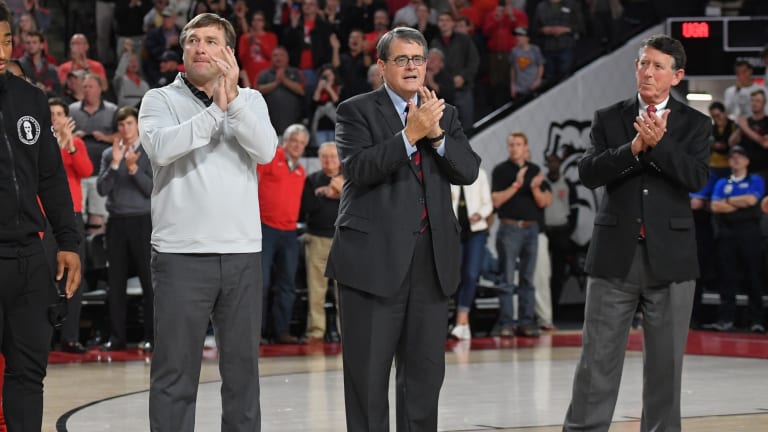
Do We Dare Be Optimistic that College Football Will Return This Fall?

It is May 1. That means it has been seven weeks since March 12, the day when sports were shut down in the United States by the coronavirus.
It feels like seven years.
During these weeks of isolation and social distancing I have heard from many of you. You didn’t want a promise that sports, specifically college football, would come back this Fall. Right now no one can give you that.
You did, however, want some hope, even if it was small, that football would return to our lives at some point.
Truth be told, it’s hard to deal in optimism about sports when you look at those horrible numbers representing illness and death that grow night after night.
But as this week drew to a close, there came some encouraging signs.
University of Georgia president Jere Morehead said in a radio interview on Thursday that his hope was to have football players return to campus in July and for the students to be in place for the start of Fall classes on Aug. 20.
That is important because the powers-that-be in college football have made it pretty clear: If there are no students on campus there will be no football.
“Our expectation at this point is that we’ll have a normal football season and be able to play all of our games,” Morehead said in the interview with WGAU in Athens. “Certainly our hope and expectation is that we’ll have fans in the stands and we hope that we’ll have our players here at some point during the month of July.”
Other college presidents, including Bruce Harreld of Iowa, Mitch Daniels of Purdue and Lawrence Schovanec of Texas Tech said this week that their students will be back on campus for the Fall. So have the University systems of Alabama and North Carolina.
So what has changed from a few weeks ago?
I reached out to Greg McGarity, the director of athletics at the University of Georgia, to help put all of this into context.
“The way I would frame it is that there is truly light at the end of the tunnel now. We are hearing encouraging news on the return to campus topic very frequently now,” he said.
“If you look at the models in our state, we peaked 25 days ago. Among the 11 states that are in the SEC footprint, things are trending the right way.”
Schools are currently formulating their plans for students to return to campus for the Fall semester. At Georgia there are nine different working groups charged to study various components of campus life. One of those working groups is athletics, of which McGarity is the chair.
McGarity’s working group will study how athletics, particularly football, should return to campus and what it would look like.
“We’re going to focus on the return of the student-athletes, hosting events in the fall, and hosting events with audiences and following directives from the NCAA,” he said.
The reports from the various working groups will be filed in May and eventually a road map for re-opening the campus will be issued for the entire University System of Georgia by the Board of Regents. The hope is that the document is completed in June.
At this point no one can say for sure what college football is going to look like if it does return. Will there be fans in the seats? If so how many? Will there be social distancing? Will there be tailgating, which is such an important part of the game day experience?
Some states, like California, are not confident that their colleges will play football this Fall. Conferences like the SEC and ACC could decide to play while others do not.
In an interview, SEC Commissioner Greg Sankey said that was a possible scenario.
“There is room for different conferences to make different decisions,” he told Jacksonville, Fla., radio station 1010XL.
“This much we know. Things will be different,” said McGarity. “I think we’ll know a lot more in 30 days. The uncertainty is difficult because we just don’t know. Nobody likes not being in control and this time we’re not. We have to react to the science and the data. No matter what, this is about the safety and well-being of everybody involved.”
A word of caution here: Remember that the start of college football season (Aug. 29) is still 121 days away. A lot could change.
“We all understand that the virus is still in control,” McGarity said.